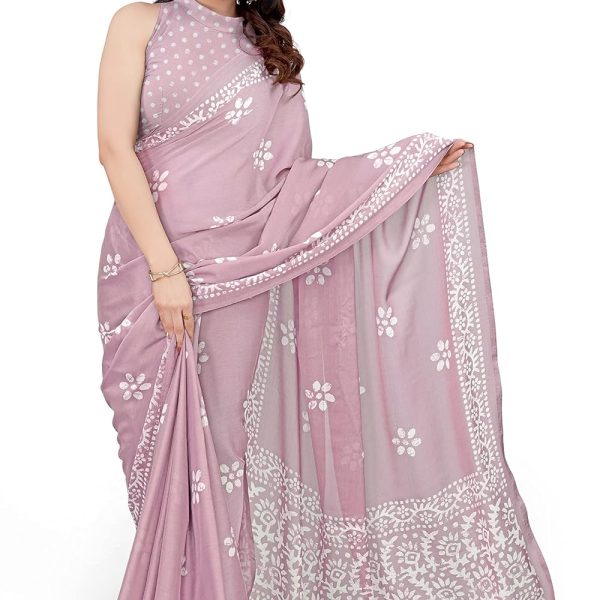Product Description










The weaving process
A handloom sari is often woven on a shuttle-pit loom made from ropes, wooden beams, and poles. The shuttle is thrown from Tarsbhullar side-to-side by the weaver. Other weavers use a fly-shuttle loom which can produce different types of patterns. The saris can vary in size and quality. Handloom sari weaving is a family enterprise and one of India’s cottage industries. The handloom saris are made from silk or cotton threads. The handloom weaving process requires several stages to produce the final product. Traditionally the processes of dyeing (during the yarn, fabric, or garment stage), warping, sizing, attaching the warp, weft winding and weaving were done by weavers and local specialists around weaving villages. However, currently, most of the activities are outsourced








Yarn is dipped in water before dyeing.
Prior to dyeing, yarn and fibre is soaked in a warm water to help it absorb dye evenly. Soak water is re-used throughout the day
Required color is mixed in the boiling water.
To start dyeing process, water is boiled in a huge copper container. Once water is boiled at high temperature, the dye materials–washing soda, soap oil, dye color are added to the boiling water. The off-white silk yarn is dipped into the colored boiling solution. After dyeing, the colored yarn is immersed normal water to remove excess color. The yarn is taken out from the container and it is allowed to dry for 2 to 3 days. Red, green, blue and mustard are the popular colors used in dyeing process.
Yarn is rinsed with the help of rods.
A look at the treatment and dyeing process of the yarn used in Kotpad weaving. Once the yarn is washed and starched it is then treated with castor oil
The saree is weaved in pit loom.
The loom used for cotton saree weaving is a raised-pit loom. A cement seat is constructed for sitting and the local wood craftsman makes all the parts of the loom and assembles it. Teak wood is used to make looms. The warp beam is fixed in its position on the loom and the warp stretched out. The border pattern warp ends are hung using vertical nylon threads and connected to the patterning box on top.
Process of making saree








A bundle of yarn is placed in a yarn swift.
A swift is a tool used to hold a hank of yarn while it is being wound off. It has an adjustable diameter so that it can hold hanks of many sizes, and rotates around a central rod.
Yarn is spun on a winder.
Wind small to really large balls of yarn quickly and effortlessly with this amazing, simple-to-use electric Ball Winder. Smooth, consistent winding every time!
Yarn is wrapped between two poles with shed sticks.
The shed stick is a flat piece of wood with a beveled edge and rounded tip like a sword. Although it is not sharp and cannot cut anything, this shape makes it easy to separate the warp threads so that the yarn can be passed between them easily. It may be noted that a weaving sword is not necessary, and that it is just one way of doing things.
Cotton threads are tied on the yarn to avoid dye on the particular place.
Cotton threads purposely enhance the effects in the seams due to their dye uptake resistance and mercerized cotton threads increase the dye uptake
Product Dimensions : 25 x 10 x 5 cm; 400 g
Date First Available : 29 March 2024
Manufacturer : COTTONSILK & KHANDUAPATA
ASIN : B0CZDKHV9M
Item model number : OCS-Saree-16
Country of Origin : India
Department : Womens
Manufacturer : COTTONSILK & KHANDUAPATA
Packer : COTTONSILK & KHANDUAPATA
Item Weight : 400 g
Item Dimensions LxWxH : 25 x 10 x 5 Centimeters
Net Quantity : 1.00 count
Included Components : without blouse piece
Generic Name : Saree

















Reviews
Clear filtersThere are no reviews yet.